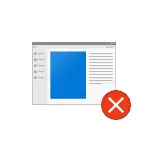
In this instruction, it is detailed how to correct the error "Windows cannot access the specified device, path or file" and how it can be called.
- Permission to execute in the properties of the file
- Windows cannot access the specified device, path or file when starting programs from flash drives and other USB drives
- Local security policies, Software Restriction Policies as a cause of error
- File Lock Antivirus Programs
- Additional Information
Check permissions in the properties of the executable file and blocking the file

The first thing to check if the error occurs "Windows cannot access the specified device, path or file" - current permissions for the execution of this .exe file. To do this, follow these steps:
- Open the .exe file properties that you try to run (no shortcut properties, namely executable .exe file), To do this, click on it right-click and select the desired menu item.
- Click the Security tab (if there is no missing, it is possible that the file is on the FAT32 volume and this section of the instructions are not suitable for your case).
- By selecting users in the list of "Groups and Users", check whether the ban is enabled for reading and executing for administrators or specifically for your user.
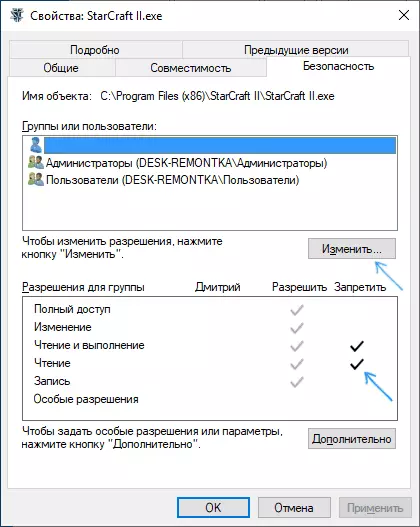
- If such a ban is present, click the "Edit" button, and in the next window or remove the "Pre-" marker, or set the "Allow" marks for the necessary users and groups.
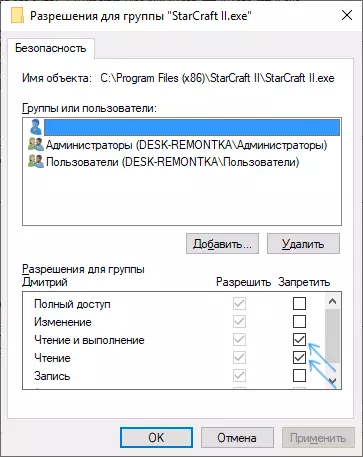
If the file was loaded from the Internet, just in case, go to the "General" tab in the .exe file properties and see if there are no messages "This file is received from another computer and may have been blocked to protect the computer."
If there is such notifications, unlock it by setting the appropriate mark and applying the settings.
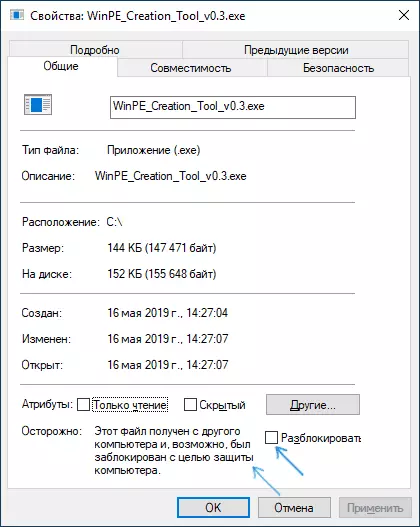
Upon completion of the changes, apply the settings and try to start the file again, which was not previously started to check whether the problem was solved.
Error "Windows cannot access the specified device, path or file" when you start .exe from a flash drive or another USB drive
If all programs, with the exception of those located on the flash drive, the memory card or external hard disk are properly launched, the cause of access to removable storage devices can be caused.
The decision in this case will be the following way:
- If your computer is installed on your computer 10, 8.1 or Windows 7 versions professional, corporate or maximum, press Win + R keys, enter the gpedit.msc and press ENTER. For the home edition of Windows, go to step 5.
- A local group policy editor opens, go to the "Computer Configuration" section - "Administrative Templates" - "System" - "Access to removable storage devices". Please note the value of the "Removable Discs: Prohibit Performance" and other policies associated with removable disks.
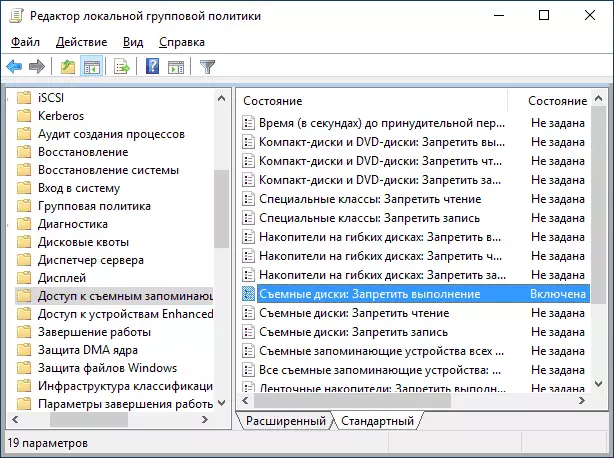
- If there are included among them, double-click on these policies and set "not specified" or "disabled", apply the settings.
- Repeat the same for a similar subsection to the "user configuration" and go to step 9.
- If your computer has a home edition of Windows, press the Win + R keys on the keyboard, enter the REGEDIT and press ENTER.
- In the registry key that opens, go to the sectionHKey_Local_machine \ Software \ Policies \ Microsoft \ Windows \
- If the RemovablestorageDevices subsection is located inside it, remove it.
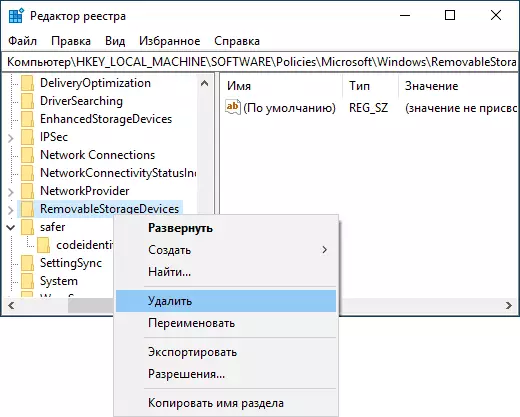
- Check out the presence of a similar subsection in HKEY_CURRENT_USER, remove it in case it is present.
- Typically, the settings come into force immediately, however, the USB drive will need to be disabled and renovated.
Limited Program Terms and Safety Policies
It rarely, but it happens that the cause of the error under consideration is the configured policy of limited use of programs or local security policies.
You can check the availability of the limited use policies using the registry editor (it happens that when they are installed third-party software, they are not displayed in the local group policy editor):
- Press the Win + R keys on the keyboard, enter the REGEDIT and press ENTER.
- Go to RegistryhKey_Local_machine \ Software \ Policies \ Microsoft \ Windows \
- Look, whether Safer \ Codeidentifiers subsection is present in it. If yes - SRP policies are included and you have two main options.
- More sparing (especially if it is not about your personal computer) - change the value of the defaultlevel parameter on the right side of the registry editor for 40,000, apply the settings and restart the computer.
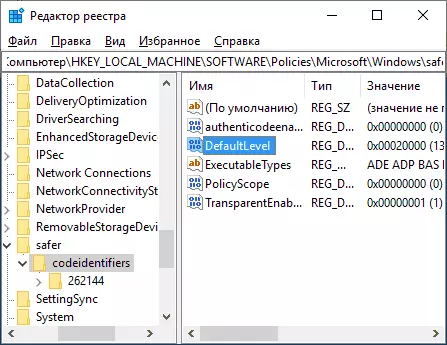
- To completely remove the Codeidentifiers subsection in Safer and restart the computer.
A similar error can be called configured security policies (you can see in SECPOL.MSC - Local Policy - Security Parameters. In particular, when it comes to the user in the domain, the value of the Account Control parameter may be the reason for the administrator's approval mode for the built-in account administrator.
File Start Lock Antivirus Programs
Antiviruses can place suspicious files (especially when it comes to games from non-license sources, utilities from the Internet) to quarantine and block them to start using the techniques that cause the appearance of the same message "Windows cannot access the specified device, path or file. You may have no desired permissions to access this object. "Check the magazine of your antivirus or other security, whether the started file is not in the threat found list. You can also try simply temporarily disable the antivirus if you are sure that the file is in order (but I recommend first checking it on Virustotal).
Additional Information
Finally - a few additional points that should be taken into account if you encountered an error from this article in Windows 10, 8.1 or Windows 7:
- The reason may cause third-party means of parental control or blocking programs (see how to block the launch of programs in Windows).
- If you use an embedded account with the "Administrator" name, try creating a new user with a non-reserved name and give it administrator rights, and then check whether the problem is saved while entering this user (see how to create a Windows 10 user).
- In case the problem appeared suddenly, and also recently the same file started, try using Windows Recovery Points. Even if they do not start with the same error, you can use them from the boot flash drive from Windows: boot from it and on the second screen at the bottom left select "System Restore".
- If the program starts from a shortcut, open its properties and see whether the path refers to the "Object" field.
- When you location .exe file on a network disk, make sure it is available from your computer.
